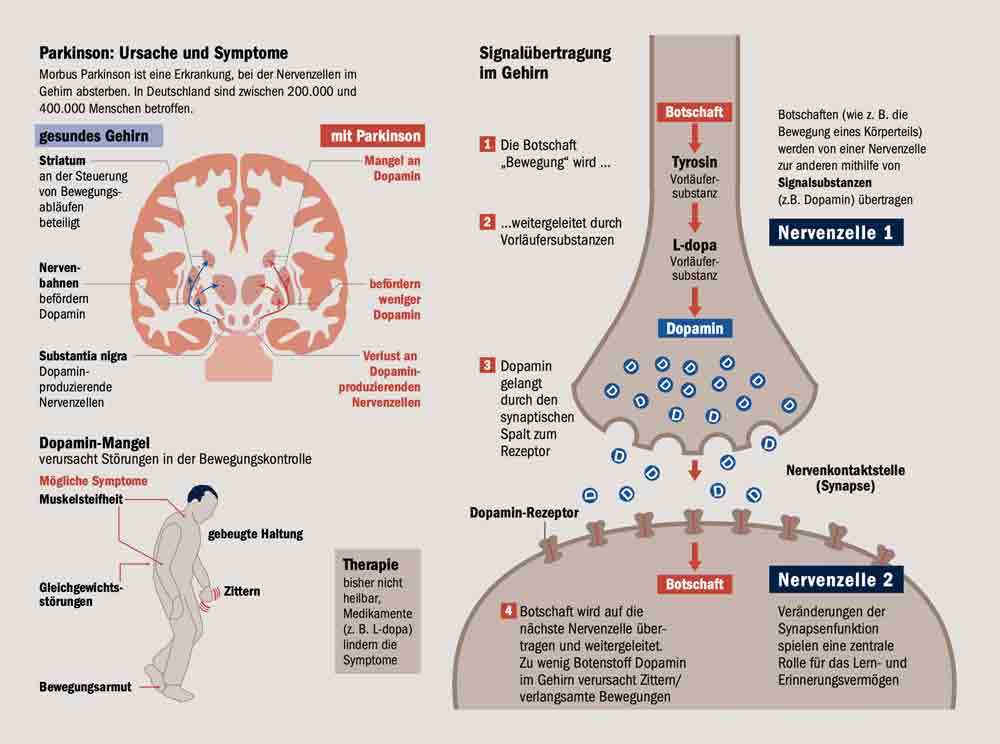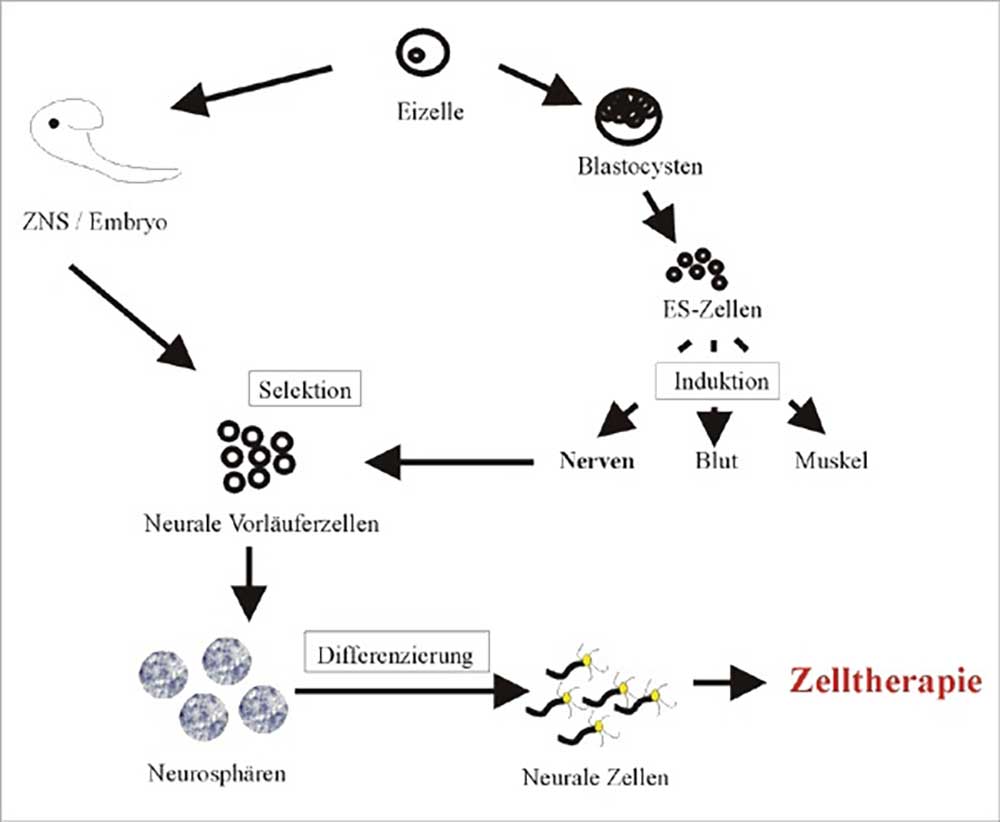In English:
Stem Cells for the Treatment of Neurodegenerative Diseases
Neural tissue for cell therapy can be generated from neural precursor cells maintained under specific culture conditions in mouse models through two alternative pathways. Graphic: Twardzik
In diseases such as Parkinson’s, Alzheimer’s, and Creutzfeldt-Jakob, nerve cells in the brain degenerate and die. This loss might potentially be compensated if surviving nerve cells can be induced to multiply. To approach this goal, scientists at the University of Würzburg are researching brain stem cells, which possess the ability to divide and self-renew.
Over the past two years, the media has frequently reported on neurodegenerative diseases, their treatment possibilities, and chances for cure, largely sparked by the BSE crisis. Parkinson’s disease is one such condition affecting approximately 300,000 people in Germany, with around 30,000 new cases annually. Alzheimer’s disease, affecting 800,000 people in Germany, is expected to double in prevalence over the next decade.
Another ailment among neurodegenerative diseases is Creutzfeldt-Jakob disease. According to Dr. Thomas Twardzik from the University of Würzburg’s Institute of Medical Radiobiology and Cell Research, the spread of this human variant of BSE is currently challenging to estimate. All these diseases share progressive brain degeneration, with current treatments addressing only symptoms.
For a long time, it was believed that the brain cannot self-repair damage because destroyed nerve cells are not renewable. However, recent years have shown that nerve cells can indeed regenerate in the brains of rats and songbirds, attributed to neural stem cells’ potential for division and self-renewal.
Dr. Twardzik states, “In animal experiments, using these cells to regenerate damaged nerve tissue results in the formation of new, functional nerve cells. However, it can also lead to tumor formation in some cases.”
Under the leadership of Prof. Dr. Ulf R. Rapp and funded by the German Research Foundation, Dr. Twardzik’s research group aims to investigate the developmental potential of neural stem cells more comprehensively. The cells will be genetically manipulated to guide them into specific developmental pathways and temporarily retain them therein.
The study aims to reveal mechanisms that lead to the formation of nerve cells. Dr. Twardzik anticipates that these findings will also help suppress tumor formation in transplantation experiments.
The results of this research are expected to lay the foundation for selectively activating programs in developed nerve cells that restore them with the properties of their neural precursors. The long-term goal is to use such cells as tissue replacements in neurodegenerative diseases.



